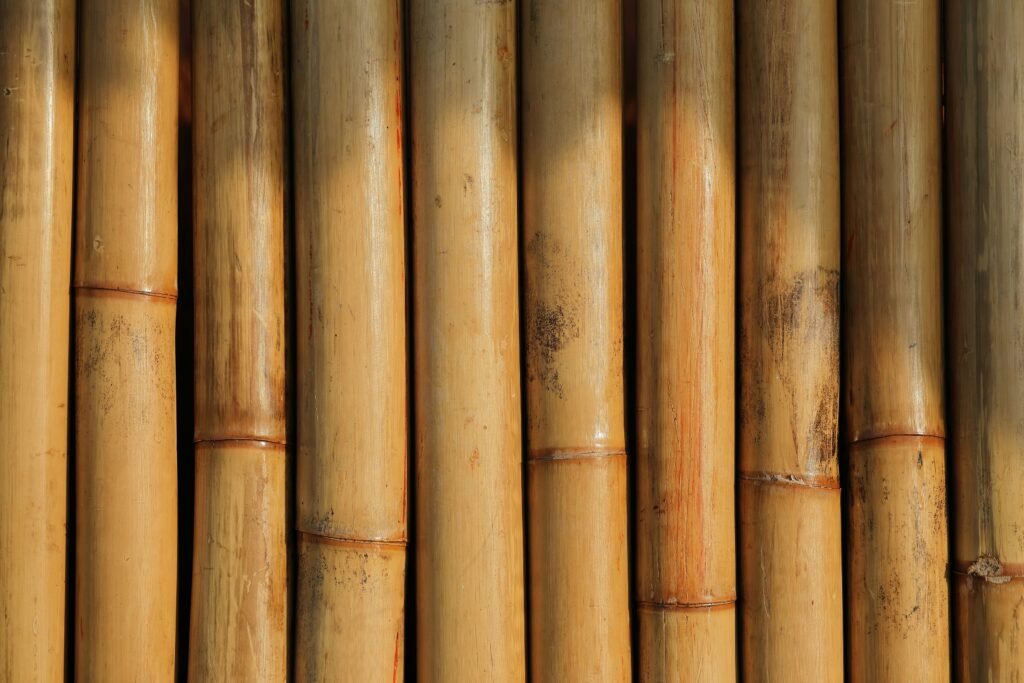Plastic pollution has escalated into a global crisis, leaving an indelible mark on our environment. The excessive use of plastic utensils is a significant contributor to this issue, necessitating a paradigm shift towards more sustainable alternatives. In this article, we embark on a comprehensive exploration of the environmental impact of plastic, delving into the intricate nuances that make bamboo utensils a superior, eco-friendly choice.
The Problem with Plastic
Plastic Pollution Crisis

The global plastic pollution crisis is a dire situation that demands our attention. With an emphasis on the magnitude of the issue, this section paints a vivid picture of the alarming statistics associated with plastic waste. Over 8 million tons of plastic find their way into the oceans annually, posing a severe threat to marine life and ecosystems. The urgency of addressing this crisis is underscored, creating a compelling case for reevaluating our reliance on plastic utensils.
The Lifespan of Plastic Utensils

Let’s delve into the intricate details of how plastic utensils, initially crafted for convenience, inadvertently transform into persistent environmental hazards. The non-biodegradable nature of plastic plays a pivotal role in this transformation, as these seemingly practical items resist natural decomposition. This resilience, designed to prolong their usability, takes a toll on the environment, particularly in landfills and oceans.
The challenges posed by non-biodegradable plastic extend to waste management systems. Unlike organic materials that naturally break down over time, plastic remains largely intact, creating complexities in disposal and recycling processes. This resilience hampers the efficiency of waste management infrastructures, leading to increased environmental strain.
Bamboo: The Greener Alternative
The Sustainability of Bamboo Utensils

Bamboo emerges as a beacon of sustainability in contrast to traditional plastic production.
Let’s take a deep dive into the regenerative properties of bamboo, its rapid growth, and its minimal environmental impact. Bamboo, often underestimated, possesses remarkable regenerative qualities. It has the ability to rejuvenate and proliferate at an astonishing pace, making it a standout in the realm of sustainable resources.
Bamboo’s rapid growth is a key factor in its eco-friendliness. Unlike slower-growing trees used for traditional wood products, bamboo can reach maturity in just a few years. This swift maturation not only makes bamboo an abundant resource but also contributes to its sustainability.
Moreover, the minimal environmental impact of bamboo cultivation is noteworthy. Bamboo requires significantly fewer resources and land than traditional wood or plastic production. Its adaptability to diverse climates further reduces the strain on ecosystems. By presenting bamboo as a renewable resource, we underscore its abundance and potential to alleviate the ecological burdens imposed by the plastic industry. Embracing bamboo as a sustainable alternative becomes not just a choice but a proactive step towards preserving our ecosystems for future generations.
Biodegradability of Bamboo Utensils

In contrast to plastic’s persistence, bamboo utensils offer a natural and biodegradable alternative.
Let’s intricately explore the decomposition process of bamboo, shedding light on its inherently eco-friendly nature. Unlike many materials that persist for extended periods, bamboo has a natural ability to break down swiftly and return to the environment without leaving harmful residues. This organic decomposition process aligns seamlessly with sustainable practices, emphasizing bamboo’s minimal impact on the planet.
As bamboo naturally decomposes, it contributes to a closed-loop system, promoting environmental harmony. The absence of synthetic additives or harmful substances during decomposition reinforces the eco-friendly credentials of bamboo, making it an environmentally conscious choice for those seeking sustainable alternatives. Choosing bamboo isn’t just about its versatility and strength; it’s a commitment to a greener future where the products we use harmonize with the planet’s natural cycles.
Choosing bamboo utensils becomes a conscious step towards combating the long-lasting effects of plastic pollution, contributing to a healthier and more sustainable planet.
Bamboo Farming Practices

The sustainability of bamboo extends to its farming practices.
Let’s draw a clear distinction between the energy-intensive process of plastic production and the eco-friendly methods employed in bamboo harvesting. The production of plastic involves resource-intensive processes, including the extraction and refinement of fossil fuels, contributing significantly to carbon emissions. This energy-intensive nature underscores the environmental drawbacks associated with traditional plastic manufacturing.
On the other hand, bamboo harvesting employs eco-friendly methods. Bamboo is renowned for its rapid growth, requiring minimal intervention. Harvesting bamboo involves cutting mature stalks, allowing the plant to regrow naturally. This method minimizes environmental impact, as it avoids the use of heavy machinery and harmful chemicals.
Opting for bamboo not only supports sustainable practices but also reduces reliance on the energy-intensive and environmentally taxing processes associated with plastic production. It’s a conscious step towards a greener and more eco-friendly future.
Advantages of Bamboo Utensils
Durability and Strength

Bamboo utensils boast impressive durability and strength, outperforming their plastic counterparts.
Let’s take a closer look at the resilience of bamboo, presenting it as a reliable and long-lasting option for daily use. Bamboo, known for its durability and strength, exhibits remarkable resilience, making it a trustworthy choice for various applications. The natural toughness of bamboo ensures that products crafted from it withstand the test of time, offering consumers a reliable and enduring option.
When compared to plastic, bamboo’s resilience takes center stage, emphasizing its sustainability and reduced environmental impact. Unlike plastic items that often succumb to wear and tear, bamboo products maintain their integrity over the long term, reducing the frequency of replacements. This inherent durability aligns with sustainable living practices, encouraging individuals to choose bamboo as a resilient and eco-conscious alternative, ultimately contributing to a greener and more sustainable lifestyle.
Aesthetic Appeal

Beyond functionality, bamboo utensils offer a natural and aesthetically pleasing dining experience.
Let’s delve deeper into the captivating organic qualities of bamboo and juxtapose them against the synthetic appearance of plastic. Bamboo, celebrated for its natural beauty, boasts a distinctive visual charm stemming from its unique fibers, textures, and earthy hues. The organic patterns found in bamboo products evoke a sense of authenticity and connection with nature, creating an aesthetic that resonates with eco-conscious consumers seeking a harmonious blend of functionality and elegance.

Contrastingly, the synthetic appearance of plastic lacks the warmth and organic richness inherent in bamboo. Plastic items, with their uniform surfaces and artificial sheen, often convey a manufactured and impersonal aesthetic. The stark difference between the earthy, authentic allure of bamboo and the synthetic, uniform look of plastic becomes particularly evident when considering the visual impact of everyday items. By appreciating these nuanced distinctions, consumers gain a heightened awareness of the visual and environmental choices they make. Opting for the organic aesthetics of bamboo not only introduces a touch of natural elegance into daily life but also contributes to a more sustainable and visually enriching lifestyle, where each product tells a story rooted in nature.
Health Considerations
The health considerations associated with bamboo utensils are another compelling reason to make the switch.
Let’s address concerns related to potential chemical leaching from plastic, emphasizing the safety and health benefits of choosing bamboo alternatives. Plastic, known for containing harmful chemicals like BPA and phthalates, poses risks of leaching into food and drinks, especially when exposed to heat. This section aims to raise awareness about the potential health implications associated with prolonged use of plastic utensils and containers.
On the other hand, bamboo utensils offer a safer and healthier alternative. Bamboo is naturally antimicrobial and does not leach harmful chemicals into food, providing a chemical-free option for daily use. By choosing bamboo, individuals not only contribute to a greener planet but also prioritize their own well-being by minimizing exposure to potentially harmful substances present in plastic.
This holistic approach underscores the interconnectedness of environmental choices and personal health. Opting for bamboo utensils becomes a conscious decision that aligns with both sustainable living practices and a commitment to safeguarding personal well-being. It empowers readers to make choices that resonate with a healthier lifestyle while contributing to a more eco-conscious and sustainable future.
Bamboo’s Carbon Footprint

Let’s conduct a detailed analysis of the carbon footprint of bamboo utensils, delving into the manufacturing processes of both bamboo and plastic. By showcasing the inherent environmental advantages of bamboo, we can provide readers with a comprehensive understanding of the eco-friendly qualities associated with choosing bamboo.
Bamboo Utensils: A Low Carbon Footprint Choice
Bamboo utensils exhibit a significantly lower carbon footprint compared to their plastic counterparts. The key lies in bamboo’s rapid growth and regenerative properties. Bamboo forests act as carbon sinks, absorbing more carbon dioxide than equivalent stands of trees. The manufacturing process of bamboo utensils involves minimal energy consumption, as bamboo requires less processing and resources than plastic.
Bamboo Manufacturing Process:
- Harvesting: Bamboo can be selectively harvested without uprooting the entire plant, allowing for continuous regrowth.
- Processing: The processing of bamboo involves minimal energy input. It typically requires mechanical methods for cutting, shaping, and finishing the utensils.
- Transportation: Bamboo often grows closer to production facilities, reducing transportation-related carbon emissions.
Plastic Utensils: A High Carbon Footprint Dilemma

In contrast, plastic utensils contribute significantly to environmental degradation, primarily due to the energy-intensive processes involved in their production.
Plastic Manufacturing Process:
- Extraction and Refinement: Plastic is derived from fossil fuels, involving extraction processes that contribute to carbon emissions.
- Polymerization: Converting raw materials into plastic polymers demands high temperatures and energy, further escalating the carbon footprint.
- Molding and Shaping: The shaping of plastic utensils involves energy-intensive processes, including injection molding or extrusion.
Comparative Environmental Advantages of Bamboo
Choosing bamboo over plastic significantly reduces the overall carbon footprint associated with utensil production. Bamboo’s rapid growth and minimal processing requirements result in lower energy consumption and emissions. Additionally, bamboo’s regenerative nature contributes positively to the environment by absorbing carbon dioxide during its growth phase.
In essence, opting for bamboo utensils aligns with sustainable living practices, offering consumers a choice that not only minimizes their personal carbon footprint but also supports a healthier planet. This nuanced analysis empowers individuals to make informed decisions, emphasizing the environmental advantages of bamboo and encouraging a shift towards more eco-friendly alternatives in our daily choices.
Challenges and Concerns
Misconceptions about Bamboo
Addressing common misconceptions about bamboo is crucial for making informed choices. This section meticulously debunks myths related to deforestation and water usage, providing readers with accurate information. By dispelling misconceptions, we empower individuals to make sustainable choices based on facts rather than unfounded concerns.
Affordability and Accessibility
Perceived costs and accessibility issues often deter individuals from adopting sustainable alternatives. This section navigates through these concerns, highlighting how advancements in production have made bamboo utensils more affordable and widely available. By encouraging readers to consider the long-term cost-effectiveness of bamboo over plastic, we pave the way for a more sustainable future.
Making the Switch
Tips for Transitioning to Bamboo Utensils
Transitioning to bamboo utensils is a tangible and impactful step towards sustainability. This section offers practical tips for individuals to seamlessly incorporate bamboo into their daily lives. Emphasizing the ease and positive impact of adopting sustainable alternatives, readers are guided towards making a difference without overwhelming lifestyle changes.
Conclusion
Making the switch from plastic to bamboo utensils is not just a personal choice; it’s a collective effort towards environmental conservation. Beyond the ecological benefits, bamboo utensils offer durability, aesthetic appeal, and health advantages. As awareness grows about the superiority of bamboo, it becomes a shared responsibility to combat plastic pollution and pave the way for a greener and more sustainable future.
As you embrace the environmental benefits of bamboo utensils, why not take a moment to explore broader avenues for sustainable living?
For those eager to align their consumer choices with ethical practices, our “Ethical Consumerism” category provides valuable information on making mindful and responsible purchasing decisions.
Dive into our “Connecting with Nature” category, where we share insights on fostering a deeper connection with the environment.
If you’re intrigued by the concept of reducing waste and making conscious choices, our “Zero Waste Living” section offers practical tips and inspiration for a more sustainable and eco-conscious existence.
FAQs (Frequently Asked Questions)
1. Are bamboo utensils dishwasher-safe?
Yes, many bamboo utensils are dishwasher-safe. However, it’s advisable to check the manufacturer’s guidelines for specific care instructions to ensure their longevity and optimal performance.
2. Can bamboo utensils be used for hot foods?
Absolutely! Bamboo utensils are suitable for both hot and cold foods, showcasing their versatility and reliability across various culinary applications.
3. How long do bamboo utensils last?
With proper care, bamboo utensils can last for several years. Regular oiling and avoiding prolonged exposure to water contribute to their longevity, making them a durable and sustainable choice.
4. Are bamboo utensils sustainable if they need to be transported globally?
Yes, bamboo has a low carbon footprint even when transported globally. Its fast growth and regenerative nature offset the environmental impact of transportation, making it a sustainable choice for international distribution.
5. Can bamboo utensils be composted at home?
Certainly! Bamboo utensils are compostable, contributing to a closed-loop system when their lifespan ends. Proper disposal and composting of bamboo ensure minimal environmental impact, aligning with sustainable waste management practices.
